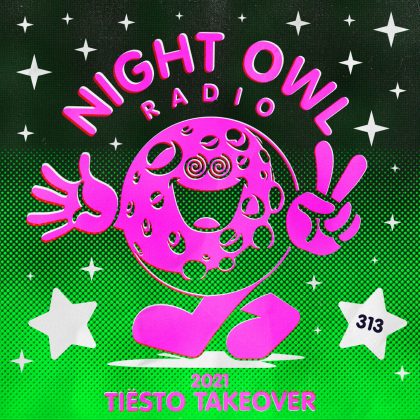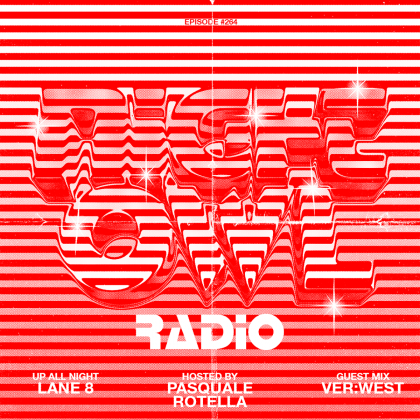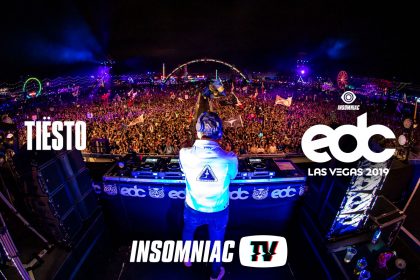Sound Evolution: The Musical Progression of Tiësto
In this new series, Sound Evolution, we take a look (and listen) at the back catalogs of some of the world’s biggest DJs.

In the late ‘90s, the world began to get its first dose of superstar DJs—guys who commanded astronomical fees, first-class tickets, champagne, and other things that were unthinkable for most promoters just a few years prior. As the homegrown sounds of house and techno started to migrate overseas and back underground, America was becoming obsessed with a new sound called “trance.”
Of course, it wasn’t all that new, as early psychedelic (also called Goa) and harder trance had made the rounds in the first underground rave scenes. However, it was the more anthemic pop sound of melodic trance that caught the attention of the exploding club culture of the late ‘90s and early ‘00s. Lines would wrap around the block at mega clubs like Giant in L.A., Twilo in New York, Avalon in Boston, Spundae in San Francisco, and many others across the country.
Names like Sasha and Digweed, Paul Oakenfold, Paul van Dyk, Armin van Buuren, and a slew of other Europeans ruled the DJ booth, giving Americans a new high-energy, melodic style of dance music that had already become mainstream across the Atlantic.
At first, Tiësto—aka Tijs Michiel Verwest—seemed to be just another Dutch phenom in an already crowded pack of DJs. However, after a closer look (and listen), there was indeed something different about this guy—something almost supernatural—that was pushing him toward the top of the trance heap and toward juggernaut status.
After grinding away as a DJ in the clubs of his hometown of Breda from 1985–94, Tiësto began to produce and started releasing hardcore and gabber music, which would later set the stage for his move to trance. He quickly understood that this Dutch niche scene of hard rave music was destined for extinction, so he quickly adapted—a skill that has served him well over the course of his career, as you will see below.
This new recipe was familiar territory for an already seasoned DJ/producer; he merely slowed down the BPMs, dropped in some melody, and was on his way to changing the dance music world forever.
Most electronic music fans in the US discovered Verwest at the same time via his explosive remix for Delerium’s “Silence.” This remix is arguably one of the most notable tracks of the era, featuring a haunting vocal by an unlikely singer at the time: Sarah McLachlan. Known more for her heart-wrenching, folky ballads than epic trance numbers, she became the key ingredient to the track that would break Tiësto to the masses.
After “Silence” (In Search of Sunrise Mix), Tiësto had been officially anointed as electronic music royalty, and he was on his way to becoming the culture’s reigning king. Here is a selection of tracks that will give you a solid understanding of Tiësto’s musical progression over the last three decades, much to the chagrin of many trance purists. Change doesn’t always come easy, but it’s safe to say that Tiësto has weathered it all quite well and will go down in electronic music history as one of the true greats.
This is the musical evolution of Tiësto:
Delerium ft. Sarah McLachlan – “Silence” (Tiësto’s In Search of Sunrise Remix) [2000]
You will probably want to listen to this tune a couple of times; many fans consider this one of his masterpieces. Even if you aren’t a huge trance fan, it’s hard to deny the power of this remix. It is, without a doubt, the song that put Tiësto on the map in the United States and still holds up today.
“The Tube” [XTC, 1996]
“The Tube” is one of the earlier trance works from Tiësto, still holding on to some of his earlier hardcore sensibilities with the hard-driving kick drums and faster BPMs. There is even a touch of acid at the end to give it some bite. However, despite the tougher sensibilities, it’s clear that he is moving toward a more melodic sound with big synth pad breakdowns.
“Theme From Norefjell” [Black Hole Records, 1999]
The version featured here is an acetate containing the original mix of “Theme From Norefjell.” It’s a significant move toward the more epic style that would make Tiësto a superstar in the global trance scene. The BPMs are a bit slower, the melodic synth pads are much more pronounced, and we are starting to feel the fluffy epicness that was the late ‘90s.
“Flight 643” [Magik Muzik, 2001]
As the ‘90s wound down and the ‘00s fired up, the sound of epic trance was starting to wane a bit, with just too many unicorns and rainbows, corny vocals, and formulaic production for even the most devout trance heads. Tiësto pivots at just the right time and brings a harder edge to his productions.
“Traffic” [Magik Muzik, 2003]
With “Traffic,” we continue to hear that hard-driving, even anxiety-inducing sound that is killing the dancefloors of the moment with tense buildups and relentless beats. Sorry, fluffy… there is just nothing for you here anymore.
“Adagio For Strings” [Magik Muzik, 2005]
Tiësto’s take on Samuel Barber’s classical work is another one of his most significant moments—and for a good reason. This track has it all for core fans: a hard-driving groove with moments of cinematic respite that create those dreamy and unforgettable moments on the dancefloor. This vibe is where the Dutch trance master shines, and this return to his more classic styling had fans rejoicing.
DJ Tiësto ft. CC Sheffield “Escape Me” [Musical Freedom, 2009]
The years between 2006 and 2010 were particularly tough on the superstar DJs and the club/rave scene in general. The once-thriving dance scene pivoted toward edgier indie sounds, bloghouse, and more of a hipster vibe that left many of the electronic DJs out in the cold. Tiësto makes a power move away from his roots to a more electropop sound to appeal to the new dancefloor kids.
DJ Tiësto x Diplo ft. Busta Rhymes “C’mon” [Musical Freedom, 2010]
It was another big move with his sound, this time with hipster darling Diplo and hip-hop icon Busta Rhymes. “C’mon” blends the hard-driving electro house sound with a dash of classic trancey bits and a full-on hip-hop lyric that all just seem to work. The song is a massive hit, propelling Tiësto into the “EDM” revolution spreading across the US at the time.
“Red Lights” [PM:AM, 2013]
As electronic music slams into the pop zeitgeist of EDM hysteria, the man who was once an underground trance icon has become a full-blown pop star. His slick production, big hooks, and glossy, sexed-up music video are on par with David Guetta, Calvin Harris, and the rest of the pop EDM superstars. His core fans are beside themselves; his new fans are all about it.
DJ Tiësto ft. John Legend “Summer Nights” [Polydor, 2016]
There is no looking back at this point. The pop influences are fully instilled into his work, and Tiësto has committed to a continued evolution.
There you have it: an unlikely musical journey that has banked success after success and cemented Tiësto’s name in the pop/electronic hall of fame. His core fans will always remember him for that perfect trance sound, and hopefully, many of his new fans will dive into the older works to get a taste of what started it all for the legendary powerhouse.
Follow Tiësto on Facebook | Twitter





